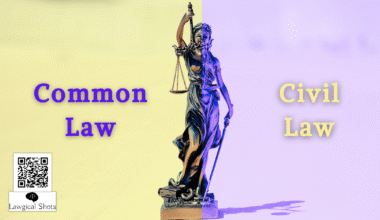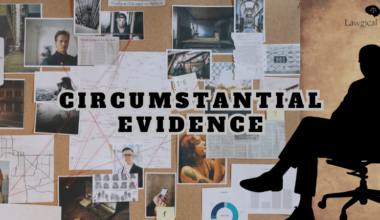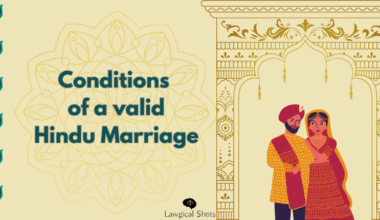“Law and order are the medicine of the body politic and when the body politic gets sick, medicine must be administered.”
~Dr. B.R. Ambedkar
We hear this word every day, ‘ law’. But have you ever paused to wonder what the Indian Constitution considers as “law”? Why does this definition matter? Imagine this: Some rule or government notification affects your life. Is it even valid? Is it fair? Does it violate your Fundamental Rights? To answer that, we need to understand what counts as “law” in the eyes of the Constitution of India.
Article 13: Definition of Law in Indian constitution
Let’s break it down. Article 13 of the Indian Constitution is like a guardian of your Fundamental Rights. It doesn’t just define what law is; it also ensures that no law can take away or limit your rights under Part III (Fundamental Rights).
Here’s what it says:
Article 13(3)(a) What is ‘Law’?
According to Article 13(3)(a), “law” includes:
- Acts of Parliament or state legislatures,
- Ordinances (temporary laws by the President/Governor),
- By-laws, rules, regulations, notifications, and even
- Customs or usages that have the force of law.
So, law isn’t just what Parliament passes, it can also be a departmental rule or even a long-followed custom if it’s legally recognized.
Article 13(1) — Pre-Constitution Laws
Any law made before the Constitution came into force (26 Jan 1950) that violates Fundamental Rights is void to the extent of the violation.
Article 13(2) — Post-Constitution Laws
No government can make a law that takes away or limits Fundamental Rights. If it does, that part of the law is automatically void.
Doctrine of Severability: Cut the Bad, Keep the Good
The Doctrine of Severability states that if part of a law is unconstitutional, that part alone can be struck down, while the rest of the law remains valid if it can function independently. In simple terms, let’s say a law has both valid and invalid parts. What happens then? The Doctrine of Severability says: Don’t throw away the whole law, just cut out the unconstitutional part.
Case Laws on Doctrine of Severability
R.M.D. Chamarbaugwala v. Union of India (1957)
➤ The Supreme Court held that only the invalid part of a statute violating fundamental rights can be severed, and the rest can survive.
Why it matters: This keeps the system practical. Not every law has to be scrapped fully. If some portions violate the Constitution, only those portions are cut out.
Doctrine of Eclipse: Not Dead, Just in the Shadows
This doctrine says that pre-Constitutional laws that are inconsistent with fundamental rights aren’t null and void — they’re just eclipsed or suspended. They remain dormant, but can become valid again if the inconsistency is removed.
Now, imagine a law made before 1950 that violated a Fundamental Right. Does it die? Not really. The Doctrine of Eclipse says: Such a law is not dead, it is just hidden or “eclipsed.” It becomes inactive as long as it conflicts with Fundamental Rights. But here’s the twist: If a constitutional amendment removes the conflict, the law becomes active again.
Case Law on Doctrine of Eclipse
Bhikaji Narain Dhakras v. State of M.P. (1955)
➤ The Court ruled that such laws aren’t dead but inactive; they revive once the conflict with fundamental rights is removed (e.g., by constitutional amendment).
Why it matters: Pre-Constitution laws don’t need to be scrapped — they’re just kept on pause until they can be revived constitutionally.
Summary on Definition of Law in Indian constitution
The Constitution Doesn’t Let Any Law Override Rights.
- “Law” under the Constitution is broad: it’s not just Acts but even rules, customs, and notifications.
- Article 13 protects your Fundamental Rights by declaring unconstitutional laws void.
- The Doctrine of Severability removes only the violating parts of a law.
- The Doctrine of Eclipse keeps unconstitutional laws inactive but not gone, until they can be valid again.
So next time you hear someone say, “This is the law,” ask yourself — is it really the kind of law our Constitution allows? Article 13 clearly says that any law which goes against Fundamental Rights is not valid, whether it was made before or after the Constitution came into effect.
This is why even old laws made during British rule can be questioned today. Courts in India have used Article 13 many times to declare unconstitutional or change laws that were unfair or went against the rights of people. It is also one of the reasons why judicial review (where courts check if a law is constitutional) is such an important part of our legal system. Knowing what counts as “law” under Article 13 helps us understand how the Constitution protects us and keeps the government from misusing its power.
Did You Know? Even customs and usages (like community rules followed for centuries) are considered “law” under Article 13 if they have the force of law!
The definition of “Law” under Constitution of India has been decoded by our intern, Ms. Pari Mirani. She has been assisting the team in bringing informational legal blogs.








